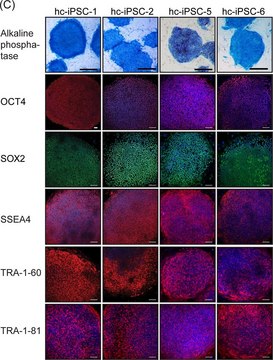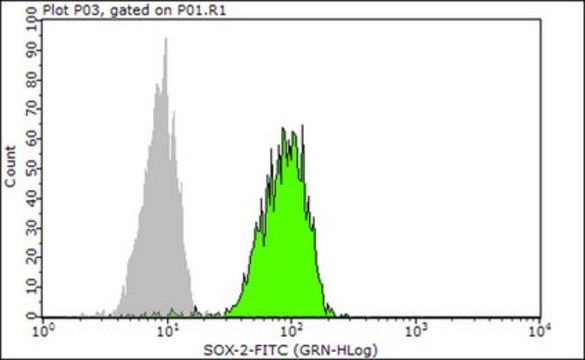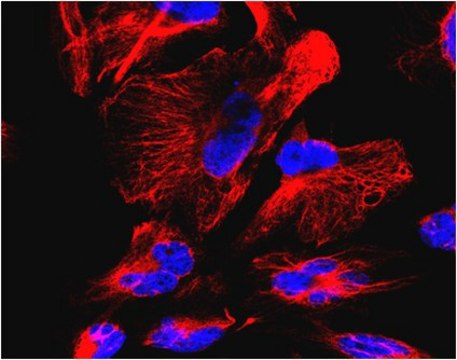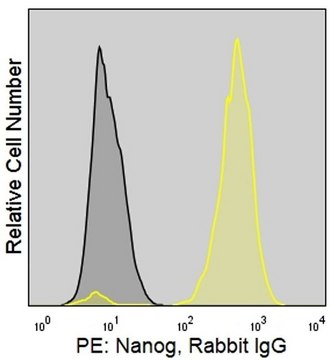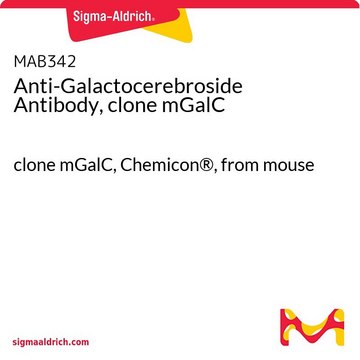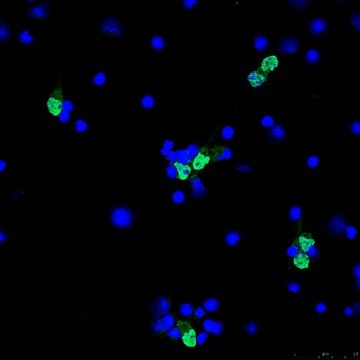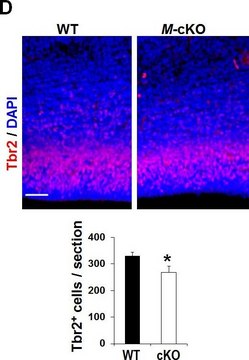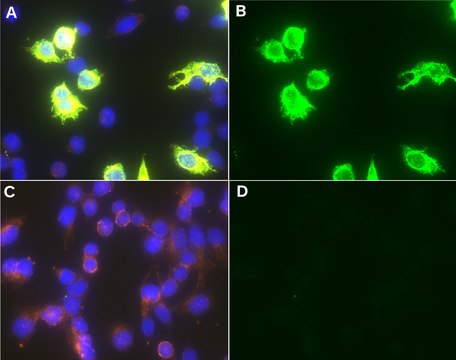推荐产品
生物来源
rabbit
质量水平
偶联物
ALEXA FLUOR™ 488
抗体形式
affinity isolated antibody
抗体产品类型
primary antibodies
克隆
polyclonal
种属反应性
human
种属反应性(根据同源性预测)
mouse (based on 100% sequence homology), rat (based on 100% sequence homology)
制造商/商品名称
Milli-Mark®
技术
flow cytometry: suitable
同位素/亚型
IgG
NCBI登记号
UniProt登记号
运输
wet ice
靶向翻译后修饰
unmodified
基因信息
human ... NANOG(79923)
一般描述
NANOG is a gene expressed in embryonic stem cells (ESCs) and is thought to be a key factor in maintaining pluripotency. NANOG thought to function in concert with other factors such as POU5F1 and SOX2 to establish ESC identity. These cells offer an important area of study because of their ability to maintain pluripotency, i.e., these cells have the ability to become virtually any cell of any of the three germ layers (endoderm, ectoderm, mesoderm).
NANOG may be useful in the immunohistochemical diagnosis of tumors. NANOG is expressed in germ cells of the fetus and in some germ cell tumors of the gonads and central nervous system (CNS).
NANOG may be useful in the immunohistochemical diagnosis of tumors. NANOG is expressed in germ cells of the fetus and in some germ cell tumors of the gonads and central nervous system (CNS).
特异性
Antibody recognizes NANOG.
免疫原
Epitope: N-terminus
Linear peptide from mouse Nanog.
应用
Milli-Mark Anti-Nanog-Alexa Fluor 488 Antibody, N-terminus is an antibody against Nanog-Alexa Fluor 488 for use in FC.
Research Category
Stem Cell Research
Stem Cell Research
Research Sub Category
Pluripotent & Early Differentiation
Pluripotent & Early Differentiation
质量
Evaluated by flow cytometry using 2102 Ep cells
目标描述
34 kDa Calculated
外形
Antigen Affinity Purified
Purified rabbit polyclonal IgG conjugated to Alexa Fluor™ 488 in PBS with 0.1% sodium azide and 15 mg/mL BSA
储存及稳定性
Maintain refrigerated at 2-8 °C protected from light in undiluted aliquots for up to 6 months from date of receipt.
分析说明
Control
2102 Ep cells
2102 Ep cells
法律信息
ALEXA FLUOR is a trademark of Life Technologies
MILLI-MARK is a registered trademark of Merck KGaA, Darmstadt, Germany
免责声明
Unless otherwise stated in our catalog or other company documentation accompanying the product(s), our products are intended for research use only and are not to be used for any other purpose, which includes but is not limited to, unauthorized commercial uses, in vitro diagnostic uses, ex vivo or in vivo therapeutic uses or any type of consumption or application to humans or animals.
未找到合适的产品?
试试我们的产品选型工具.
储存分类代码
12 - Non Combustible Liquids
WGK
WGK 2
闪点(°F)
Not applicable
闪点(°C)
Not applicable
Rong Li et al.
Stem cell research, 34, 101374-101374 (2019-01-15)
Noonan syndrome with multiple lentigines (NSML), formerly known as LEOPARD Syndrome, is a rare autosomal dominant disorder. Approximately 90% of NSML cases are caused by missense mutations in the PTPN11 gene which encodes the protein tyrosine phosphatase SHP2. A human
Rong Li et al.
Stem cell research, 34, 101362-101362 (2019-01-07)
NGLY1 deficiency is a rare genetic disease caused by mutations in the NGLY1 gene that encodes N-glycanase 1. The disease phenotype in patient cells is unclear. A human induced pluripotent stem cell (iPSC) line was generated from skin dermal fibroblasts
Amanda Baskfield et al.
Stem cell research, 37, 101436-101436 (2019-04-23)
Niemann-Pick disease type B (NPB) is a rare autosomal recessive lysosomal storage disease caused by mutations in the SMPD1 gene, which encodes for acid sphingomyelinase. A human induced pluripotent stem cell (iPSC) line was generated from dermal fibroblasts of a
Amanda Baskfield et al.
Stem cell research, 38, 101461-101461 (2019-05-28)
Niemann-Pick disease type A (NPA) is a rare autosomal recessive lysosomal storage disease caused by mutations in the SMPD1 gene, which encodes for the protein acid sphingomyelinase. A human induced pluripotent stem cell (iPSC) line was generated from dermal fibroblasts
Xiuli Huang et al.
Stem cell research, 54, 102424-102424 (2021-06-18)
Fibrodysplasia ossificans progressiva (FOP) is a rare autosomal dominant disorder of progressive ossification of skeletal muscle, fascia, tendons, and ligaments. Most FOP cases are caused by a heterozygous c. 617G > A mutation in the ACVR1 gene which encodes a gain-of-function of
我们的科学家团队拥有各种研究领域经验,包括生命科学、材料科学、化学合成、色谱、分析及许多其他领域.
联系技术服务部门